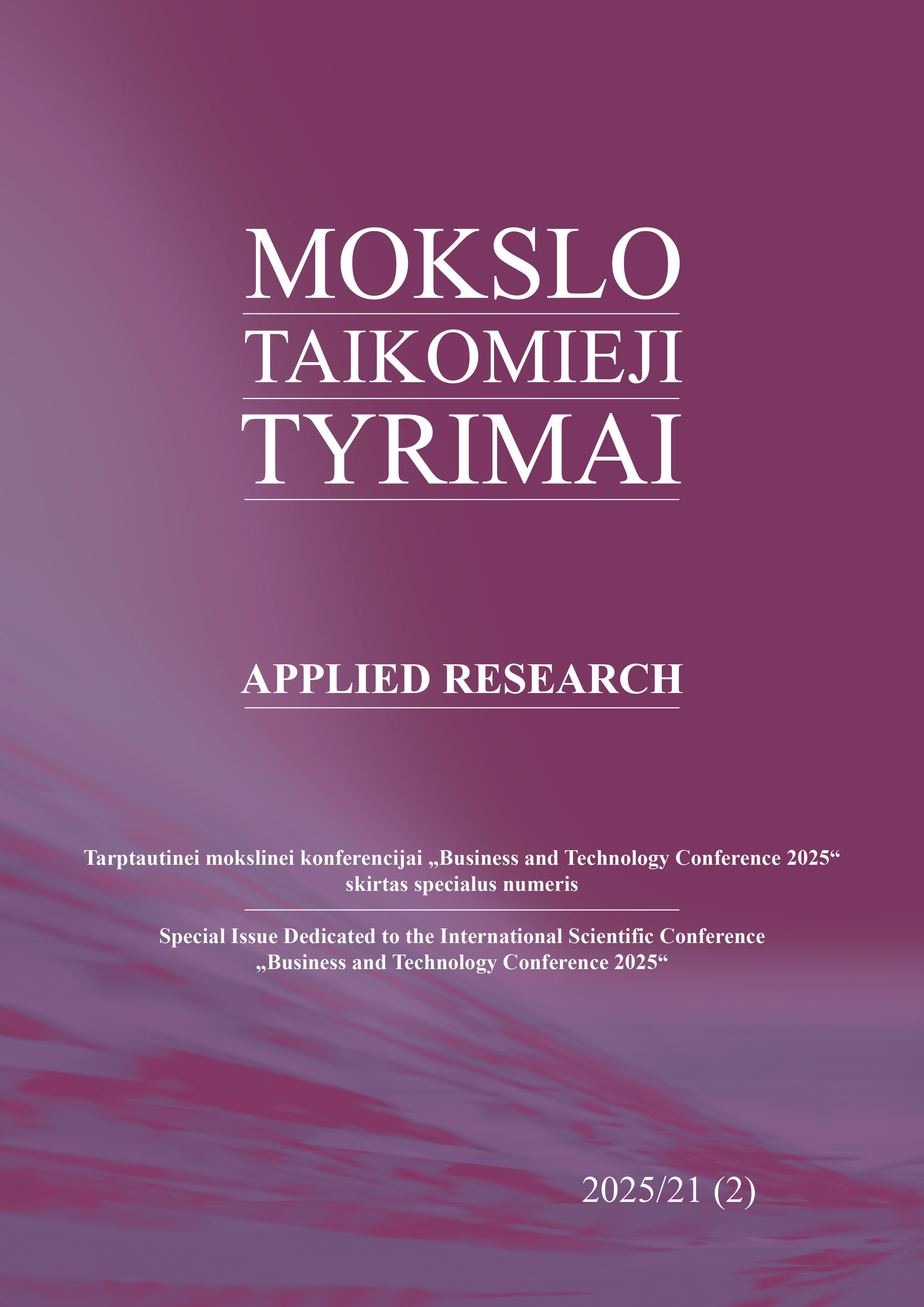Analysis of ink penetration depth inside substrates for secondary packaging
DOI:
https://doi.org/10.59476/mtt2025.v2i21.733Keywords:
cross-sections of prints, ink penetration, secondary packaging substratesAbstract
Today, the packaging industry is experiencing growth, which in turn leads to an increased amount of packaging waste. To reduce packaging waste, it is necessary to reduce the use of packaging and combine primary and secondary packaging into one. For secondary packaging, which is usually made of paper or cardboard, to replace primary packaging, the penetration depth of the ink into the substrate must be checked, as this is the most important indicator that the product it protects is not affected. The low penetration depth of the printing ink into the interior of the paper printing substrate is crucial for the safety of using this packaging. The penetration depth of the ink into the printing substrate is a very important factor in primary and secondary packaging, as it affects the overall efficiency of the packaging, health, safety, and print quality. The most important factors influencing the ink penetration depth are the porosity of the substrate, the composition of the substrate, the surface energy of the substrate, and the viscosity of the ink. This research is based on analysing and comparing the ink penetration depth in different printing materials most commonly used for secondary packaging. Based on the microscopic analysis of cross-sections of offset prints produced with cyan ink, the maximum ink penetration depth was estimated and observed in parallel with the ink coverage of the substrate. Microscopic images of the printed parts, calculated using image analysis software, were used to determine the coverage of the printing substrate. This research aims to determine which secondary packaging material achieves the lowest penetration depth of the printing ink into the substrate, which opens up the possibility of using these substrates as primary packaging substrates. In this way, the use of polymeric, ecologically unacceptable materials, which are most commonly used as primary packaging substrates, is reduced, and the use of paper or cardboard materials for primary packaging is increased. The results obtained show that the GT2 and GC2 substrates printed with higher cyan ink halftone values contain the lowest ink penetration values into the printing substrate. When printing with a 40% halftone value of cyan ink, the lowest values were achieved when printing on the substrates KD silk and GC2. The ink penetration from the unprinted side of the print was also observed and measured. Ink penetration from the unprinted side of the print occurs when the prints are output after printing, with the unprinted side of the print placed in a stack on top of the printed side.
References
1. Pirsa, S. (2024). Cellulose-based cartons: Production methods, modification, and smart/active packaging. Cellulose, 31(6), 3421–3445. https://doi.org/10.1007/s10570-024-05826-8
2. Ščetar, M., Kurek, M., & Galić, K. (2009). Schematic overview of dry food packaging material selection. In Proceedings of the EFFoST Conference: New Challenges in Food Preservation–Processing–Safety–Sustainability. Budapest, Hungary.
3. Pauer, E., Wohner, B., Heinrich, V., & Tacker, M. (2019). Assessing the environmental sustainability of food packaging: An extended life cycle assessment including packaging-related food losses and waste and circularity assessment. Sustainability, 11(3), 925. https://doi.org/10.3390/su11030925
4. European Council. (n.d.). Packaging. https://www.consilium.europa.eu/hr/policies/packaging/
5. Xu, C. E., & Zhou, Y. (2007). Synergistic effects between chemical mechanical pulps and chemical pulps from hardwoods. Tappi Journal, 6(11), 4–9. https://doi.org/10.32964/TJ6.11.4
6. Mboowa, D. (2021). A review of the traditional pulping methods and the recent improvements in the pulping processes. Biomass Conversion and Biorefinery, 14(1), 1–12. https://doi.org/10.1007/s13399-020-01243-6
7. Şimşeker, O. (2021). Offset printing results analysis of different based inks in cardboard packaging production. Polish Journal of Chemical Technology, 23(2), 88–93. https://doi.org/10.2478/pjct-2021-0022
8. Stark, N., & Matuana, L. (2021). Trends in sustainable biobased packaging materials: A mini review. Materials Today Sustainability, 15, 100084. https://doi.org/10.1016/j.mtsust.2021.100084
9. Marttila, E. (2012). Material design and technology of cartonboard packaging (Bachelor’s thesis, Tampere University of Applied Sciences). https://www.theseus.fi/handle/10024/52025
10. Kipphan, H. (2001). Handbook of print media. Springer. https://doi.org/10.1007/978-3-540-29900-4
11. Aydemir, C., Semiha, Y., & Ayhan, Ö. S. (2020). Effects of ink consumption on print quality on coated cellulose-based paper surfaces. Cellulose Chemistry and Technology, 54(1–2), 89–94. https://doi.org/10.35812/cellulosechemtechnol.2020.54.10
12. Pavlović, Ž., Dedijer, S., Draganov, S., Karlović, I., & Jurič, I. (2015). Offset printing. In J. Izdebska & S. Thomas (Eds.), Printing on Polymers, 217–229. Elsevier. https://doi.org/10.1016/b978-0-323-37468-2.00013-0
13. Havlínová, B., Horňáková, L., Brezová, V., Liptáková, Z., Kindernay, J., & Jančovičová, V. (2000). Ink receptivity on paper — Characterization of paper materials. Colloids and Surfaces A: Physicochemical and Engineering Aspects, 168(3), 251–259. https://doi.org/10.1016/s0927-7757(00)00489-1
14. Bates, I., Plazonić, I., Maretić, K. P., Rudolf, M., & Seleš, V. R. (2021). Assessment of the UV inkjet ink penetration into laboratory papers within triticale pulp and its influence on print quality. Coloration Technology, 138(1), 16–27. https://doi.org/10.1111/cote.12563
15. Li, R., Zhang, Y., Cao, Y., & Liu, Z. (2015). Ink penetration of uncoated inkjet paper and impact on printing quality. BioResources, 10(4), 8135–8147. https://doi.org/10.15376/biores.10.4.8135-8147
16. Eckhart, R. (2021). Recyclability of cartonboard and carton. Wochenblatt für Papierfabrikation, 149(11), 608–611.
Downloads
Published
Issue
Section
License
Copyright (c) 2025 Jelena Poljak Gaži, Irena Bates

This work is licensed under a Creative Commons Attribution 4.0 International License.

